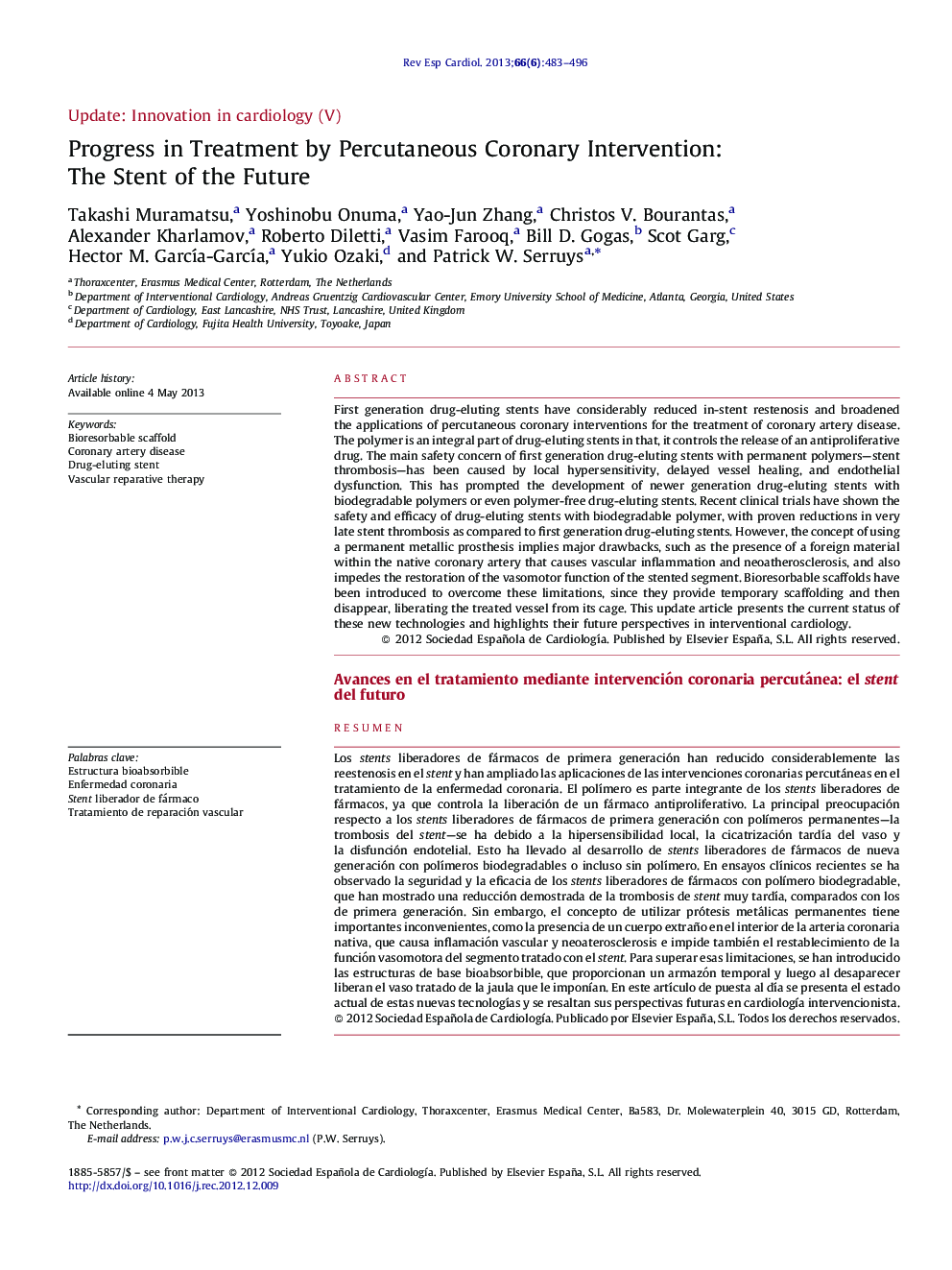| Article ID | Journal | Published Year | Pages | File Type |
|---|---|---|---|---|
| 3017838 | Revista Española de Cardiología (English Edition) | 2013 | 14 Pages |
First generation drug-eluting stents have considerably reduced in-stent restenosis and broadened the applications of percutaneous coronary interventions for the treatment of coronary artery disease. The polymer is an integral part of drug-eluting stents in that, it controls the release of an antiproliferative drug. The main safety concern of first generation drug-eluting stents with permanent polymers—stent thrombosis—has been caused by local hypersensitivity, delayed vessel healing, and endothelial dysfunction. This has prompted the development of newer generation drug-eluting stents with biodegradable polymers or even polymer-free drug-eluting stents. Recent clinical trials have shown the safety and efficacy of drug-eluting stents with biodegradable polymer, with proven reductions in very late stent thrombosis as compared to first generation drug-eluting stents. However, the concept of using a permanent metallic prosthesis implies major drawbacks, such as the presence of a foreign material within the native coronary artery that causes vascular inflammation and neoatherosclerosis, and also impedes the restoration of the vasomotor function of the stented segment. Bioresorbable scaffolds have been introduced to overcome these limitations, since they provide temporary scaffolding and then disappear, liberating the treated vessel from its cage. This update article presents the current status of these new technologies and highlights their future perspectives in interventional cardiology.
ResumenLos stents liberadores de fármacos de primera generación han reducido considerablemente las reestenosis en el stent y han ampliado las aplicaciones de las intervenciones coronarias percutáneas en el tratamiento de la enfermedad coronaria. El polímero es parte integrante de los stents liberadores de fármacos, ya que controla la liberación de un fármaco antiproliferativo. La principal preocupación respecto a los stents liberadores de fármacos de primera generación con polímeros permanentes—la trombosis del stent—se ha debido a la hipersensibilidad local, la cicatrización tardía del vaso y la disfunción endotelial. Esto ha llevado al desarrollo de stents liberadores de fármacos de nueva generación con polímeros biodegradables o incluso sin polímero. En ensayos clínicos recientes se ha observado la seguridad y la eficacia de los stents liberadores de fármacos con polímero biodegradable, que han mostrado una reducción demostrada de la trombosis de stent muy tardía, comparados con los de primera generación. Sin embargo, el concepto de utilizar prótesis metálicas permanentes tiene importantes inconvenientes, como la presencia de un cuerpo extraño en el interior de la arteria coronaria nativa, que causa inflamación vascular y neoaterosclerosis e impide también el restablecimiento de la función vasomotora del segmento tratado con el stent. Para superar esas limitaciones, se han introducido las estructuras de base bioabsorbible, que proporcionan un armazón temporal y luego al desaparecer liberan el vaso tratado de la jaula que le imponían. En este artículo de puesta al día se presenta el estado actual de estas nuevas tecnologías y se resaltan sus perspectivas futuras en cardiología intervencionista.
